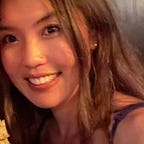Harvard in Tech Spotlight: Thomas Pologruto, Chief Data Architect and Chief Technology Officer of Liquid Markets and Data Science at Blackstone
I spoke with Thomas Pologruto, Chief Data Architect and Chief Technology Officer of Liquid Markets and Data Science at Blackstone.
Thomas completed his PhD in biophysics focused on neuroscience at Harvard. On the experimental side, he conducted research on microscope construction, optics, and multiphoton processes. On the computational side, he studied imaging and wrote software to build custom microscopes to run complex experiments. Combining the experimental and computational sides, Thomas explored how circuitry formed in the cortex as animals learned and developed. In this process, he worked extensively in modeling animal synapses over weeks and months.
As he was finishing his PhD, his then girlfriend, now wife, encouraged him to go into the industry and explore finance. In this process, he met a former physicist who had also transitioned into finance. He showed Thomas that the Black Scholes equation that he had used to model neurons could also be applied to options trading.
Thomas started his finance career in the quantitative portfolio management world, first in the quant trading world and then in quant investing, working with Merrill Lynch, Credit Suisse, RBC Capital Markets, Capstone Investment Advisors, and Kepos Capital before transitioning to Blackstone, where he has focused on bringing quantitative analysis to illiquid asset classes.
At Blackstone, Thomas works with all the firm’s data sets, bringing them to life and empowering teams within Blackstone to do more and answer more questions with data.
Thomas shared his advice for creativity, cross functional work, data analysis, leadership, and learning.
Put new projects into history frameworks. People instinctively want to treat each new project as something entirely different, leading them to inadvertently struggle through reinventing the wheel each time. As Thomas found through discovering the surprising applications of his biophysics work to finance, everything is interrelated and interconnected. Instead of approaching each project in isolation, explore and explicitly encourage your team to consider it in the context of prior initiatives, challenges, and data.
Refine your process. Even beyond specific interdisciplinary models, Thomas has found the scientific method from his research work incredibly applicable to his work in finance. Ultimately, the success of a project comes down to the inputs (the data and the people) and the process. Process underlies so much. Excellent resources and talent are not enough if they are not funnelled into thoughtful and rigorous processes.
Understand the data first. In working with data, there is a constant need for balance: to develop models that neither underfit nor overfit the data. In order to draw the signal out from the noise and strike this balance to formulate a usable and effective model, Thomas always dives into the raw data first, visualizing it, understanding how it behaves, and coming up with the right questions to ask. He determines how much bias the data has and adds just enough complexity. Models need to be just complex enough but no more so.
Incorporate the human element. In formulating models and drawing conclusions, focus on the visceral elements that contextualize the insights for people. Ultimately, models are only as effective as their impacts, and each impact involves other people, their work streams, and their priorities. Dive into the data but do not forget the human element to ensure you create deliverables that people understand and resonate with.
Find people who can augment you. As a leader, Thomas looks for people who are smarter and better than he is. He provides the direction and guiding principles, and they flesh out each detail. In putting together his team, he looks for people with complementary strengths, bringing together a group of uniquely talented people to form a well rounded team whose whole is greater than the sum of its parts.
Give people skin in the game. Motivate your team by giving them a meaningful stake in the outcome and success of each project. Understand what makes them tick and tie this variable to the project to help your team members find incentive, motivation, and energy in their work.
Learn to code. With the hindsight he has now, Thomas would have started programming much earlier. Beyond programming languages themselves, coding teaches you how to problem solve, develop frameworks for breaking down challenges into smaller pieces, and build solutions from the ground up.
Find environments that encourage risk taking. When Thomas was deciding on PhD programs, he picked Harvard because it had a flexible curriculum and explicitly encouraged students to carve out their own path. Students were encouraged to try crazy projects and accept and learn from, rather than avoid, failure. During his time at Harvard, Thomas learned new skills in programming and worked at companies, labs, and medical institutions throughout Cambridge. In the process of finding his own best way to approach problem solving, he learned and grew so much more.
